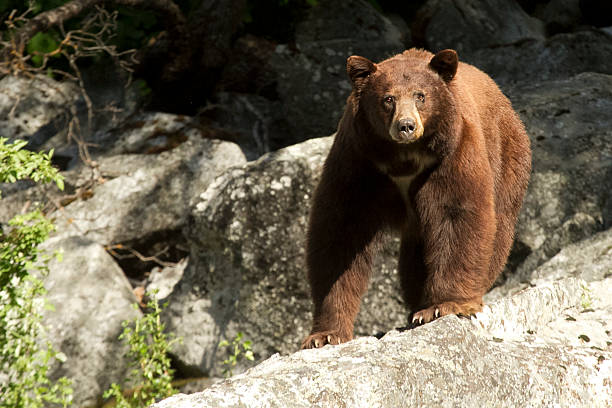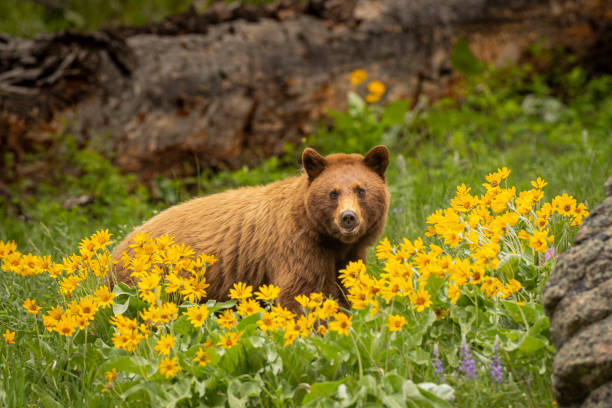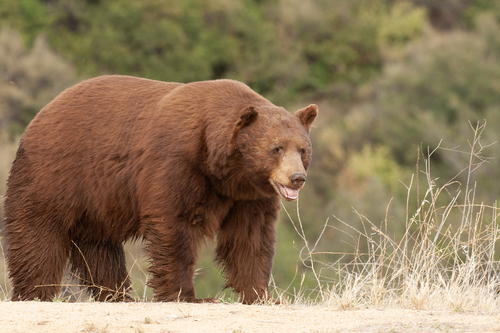American Black Bear (Ursus americanus) is one of the most common bear species in North America, but among its many subspecies there is one special one-the brown baribal (Ursus americanus cinnamomumThis bear has a unique color-from light red to dark brown, which distinguishes it from the usual black baribals.
The brown baribal is a genetic variant of the American black bear and lives mainly in western North America. Its rare coloration is often confused with the brown bear (Ursus arctos), although this is a completely different view.

1. scientific classification and description
🔬 Scientific classification:
✔ The Kingdom: Animals (Animalia)
✔ Type: Chordal (Chordata)
✔ Class: Mammals (Mammalia)
✔ Row: Predatory animals (Carnivora)
✔ Family: Bearish (Ursidae)
✔ Gender: Bears (Ursus)
✔ View: American Black Bear (Ursus americanus)
✔ Subspecies: Brown baribal (Ursus americanus cinnamomum)
📌 Interesting!
The brown coloration of this bear is the result of a genetic mutation that affects the pigmentation of the coat.
2. Habitat
📍 Where does the brown baribal live?
✔ Rocky Mountains and Appalachian Mountains
✔ Western United States (Colorado, Wyoming, Montana, Washington, Oregon)
✔ Part of Canada (Alberta, British Columbia)
✔ Northern Mexico
Brown baribals are most commonly found in mountainous and forested areas, where they have access to dense vegetation and water sources.
📌 Interesting!
Although this subspecies lives in the same regions as the common black bear, its red color gives it a natural camouflage in dry coniferous forests and meadows.
3. Appearance and dimensions
📏 Dimensions and weight:
✔ Length: 120-190 cm
✔ Height at the withers: 70-100 cm
✔ Weight:
* Males: 80-180 kg
* Females: 40-140 kg
🔹 Appearance features:
✔ Coat ranges from light red to dark brown
✔ Slimmer and smaller build than a brown bear
✔ Shorter claws adapted for climbing trees
✔ Elongated muzzle with a dark or light spot
📌 Interesting!
Unlike brown bears, brown baribals do not have a hump on their back and their claws are shorter, making them better climbers.

4. behavior and lifestyle
🌙 Activity:
✔ Most active at dusk and at night
✔ In the fall can overcome up to 30 km in search of food
🏡 Territory:
✔ Males – up to 200 km2
✔ Females – up to 20 km2
✔ Territory depends on food availability
📌 Interesting!
Baribals can open food containers and even break down car doors in search of food.
5. eating habits
🍽 What does a brown baribal eat?
✔ 70-80% plant-based food - berries, acorns, grass, roots
✔ 20-30% animal food - fish, insects, carrion
🔪 Food search methods:
✔ Digs out roots and insects with its claws
✔ Preys on small mammals
✔ Catches fish with its paws
📌 Interesting!
Brown baribals are particularly fond of salmon fish during spawning season.

6. reproduction and life cycle
💑 Mating season:
✔ June-August
✔ Males compete for females
🐣 Birth of bear cubs:
✔ Pregnancy – 6-7 months
✔ Born 1-4 bear cubs in January-February
📌 Interesting!
Bear cubs are born blind and weigh the most 300-500 g!
7. hibernation
❄ How does a bear spend the winter?
✔ Hibernates in November-December
✔ Wakes up in March-April
✔ Lives off accumulated fat
📌 Interesting!
The body temperature of a baribal during hibernation drops only by 4-5°Cwhat makes it different from other bears.
8. interacting with people
⚠ Threats:
✔ Deforestation
✔ Hunting
✔ Car accidents
⚖ Security:
✔ Protected in national parks
✔ Hunting is regulated in the US and Canada
📌 Interesting!
Baribals can remember the places where they found food, and return there even after a few days. several years!
Conclusion
Brown baribal (Ursus americanus cinnamomum)- a unique subspecies of the American black bear, which is distinguished by its red color. It is an amazing, intelligent and adaptable animal that plays an important role in maintaining the ecosystems of North America.
Thanks to the efforts of conservationists, the population of this subspecies remains stable, although climate change and human activity continue to pose certain threats. Conservation of this species is an important task for ecologists and scientists in the future.
📌 Interesting!
Brown baribal is often found in Native American legends and folklore as a symbol of strength and endurance.